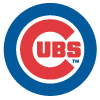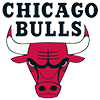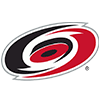Bogfella's Scouting Notebook by Brad "Bogfella" Johnson
For almost 25 years, pitching guru Brad "Bogfella" Johnson has provided insightful evaluation and analysis of pitchers to a wide variety of fantasy baseball websites and publications while also appearing as a guest analyst on fantasy baseball webcasts and radio broadcasts. Over the years, "Bogfella" has become best known for leading the way in identifying pitchers who are poised to provide excellent value.
Let's jump right in ...
This Week's Scouting Tip: Catching Our Eye
When scouting a pitcher, you can actually get a lot of valuable information by watching his battery-mate. The catcher, via his body language, actions, and reactions, will frequently provide valuable insights into the effectiveness and command capabilities of the pitcher. Therefore, when watching a game to evaluate a pitcher, you will want to watch players other than that pitcher, starting with the man behind the plate. The opposing hitter and the other fielders playing behind your pitcher will also give clues you will want to note, but for today, we will focus on keeping an eye on the catcher.
Some examples:
Multiple Position Eligibility: Soccer Goalie ...
Command is perhaps the single most influential trait demonstrated by pitchers with a high likelihood of succeeding at the MLB level. Be sure not to confuse "command" with "control" as they generally represent two different points on a pitcher's developmental timeline. Most professional pitchers have at least some level of control. Without worrying about a batter, and under limited pressure, they
Bogfella's Scouting Notebook by Brad "Bogfella" Johnson
For almost 25 years, pitching guru Brad "Bogfella" Johnson has provided insightful evaluation and analysis of pitchers to a wide variety of fantasy baseball websites and publications while also appearing as a guest analyst on fantasy baseball webcasts and radio broadcasts. Over the years, "Bogfella" has become best known for leading the way in identifying pitchers who are poised to provide excellent value.
Let's jump right in ...
This Week's Scouting Tip: Catching Our Eye
When scouting a pitcher, you can actually get a lot of valuable information by watching his battery-mate. The catcher, via his body language, actions, and reactions, will frequently provide valuable insights into the effectiveness and command capabilities of the pitcher. Therefore, when watching a game to evaluate a pitcher, you will want to watch players other than that pitcher, starting with the man behind the plate. The opposing hitter and the other fielders playing behind your pitcher will also give clues you will want to note, but for today, we will focus on keeping an eye on the catcher.
Some examples:
Multiple Position Eligibility: Soccer Goalie ...
Command is perhaps the single most influential trait demonstrated by pitchers with a high likelihood of succeeding at the MLB level. Be sure not to confuse "command" with "control" as they generally represent two different points on a pitcher's developmental timeline. Most professional pitchers have at least some level of control. Without worrying about a batter, and under limited pressure, they can throw at least some of their pitches - usually a fastball, if not a wider array of pitches - inside the strike zone. Commanding that strike zone is an altogether different challenge, and the ability literally takes the pitcher to the next level. You have heard comments like "he is consistently hitting his spots" and "every pitch is on the black" while listening to games. Those comments, if accurate, suggest that the pitcher is commanding the strike zone, and you will be able to verify that analysis simply by watching his catcher.
Catchers, especially the most experienced or best at working with a staff, are an extension of the pitcher they are catching. They think along with the pitcher and call appropriate pitches, asking for them to be located in specific areas within the strike zone. The pitch selection is typically based on "what has been working" for the pitcher that day - on any given day a pitcher's curveball may be especially sharp, or his two-seam fastball may have particularly good movement - and asking for that day's best pitch in a critical situation breeds confidence in the likely outcome. It also tips off the scout with regard to that pitcher's willingness to throw a wider variety of pitches in more stressful situations, and provides a benchmark for measuring the results. When you study the working relationship between the catcher and the pitcher, you can usually determine a great deal about the pitcher's performance, regardless of the box score.
So what are some basic things to watch for as you study the catcher?
- He shouldn't look like a soccer goalie is perhaps the most obvious. After giving the sign, the catcher will provide a target and should expect the pitch to end up in his glove with a limited amount of adjustment. If he is bouncing around like a soccer goalie behind the plate, there are serious command issues, most likely on specific pitches. Therefore you want to associate those specific pitches - perhaps changeups - with excessive movement by the catcher. If it happens all the time you can make a note that the pitcher needs work on that offering.
- Good command includes up and down along with in and out. Pitching inside or hitting the outside corner is the most basic display of good command. Unless the pitcher has exceptional velocity and/or movement, he will need to at least master this. Those with more velocity and movement will also be competent working both up and down in the zone. Changing the hitter's eye level is extremely effective, however, "missing up" can often lead to a ball landing several rows up in the outfield bleachers so the pitcher has to be able to throw those pitches to spots. Nothing really replaces good command of the strike zone.
- If the pitcher shakes off pitches, maybe in more critical situations, he may have a different idea regarding the best way to retire the hitter, but he may also be telling you he lacks confidence in the pitch being called for by the catcher. The pitchers with the highest upside can throw any of their pitches in virtually any situation. For starting pitchers, they will generally need confidence in at least three pitches.
- Also look for subtle directions being provided by the catcher. For example, a catcher might tap his glove on the ground as he sets up to remind the pitcher to make sure he keeps the pitch down. Even his overall body language will generally tell you how sure he is the next pitch will be what (and where) he expects. If it's a guessing game, he isn't ready, and the pitcher better have exceptional stuff or he is unlikely to ever be an impact pitcher at the MLB level.
We're now well into spring training, so let's check this week's Scouting Notebook ...
Move them up a notch:
Yunesky Maya (WAS) - All right, it's time to bring a serious sleeper into the Scouting Report mix. He is no kid although some may not be very familiar with him. A little background: He is 29 and pitched for several years in Cuba before defecting. He was kicked off the team and didn't pitch for nearly 2 years before signing with the Nats. He rushed through some MiLB innings and then threw a few innings in Washington late last year. He was ineffective (but obviously VERY rusty), before being dominant in winter ball. Maya was generally considered the 2nd best pitcher in Cuba - behind only Aroldis Chapman. He doesn't have a guaranteed spot yet, but he will be a factor in our opinion.
Jair Jurrjens (ATL) - While his spring numbers have not been eye-popping, Jurrjens has actually looked pretty good as he completes his recovery from knee surgery. His velocity is back to pre-surgery levels, and his command appears to be returning as well. That will be the key to his performance in 2011. He is not overpowering, but he typically displays an advanced mound presence. He works down in the strike zone and regularly keeps hitters guessing with an assortment of quality pitches. Although he may not post the kind of numbers he gave us in 2009, he is an excellent value pick for this season.
Chris Young (NYM) - He has proven to be a useful starter when he's healthy, however he hasn't taken a regular turn in a few years. Now in new surroundings, he has looked good this spring, and has probably claimed a spot in the Mets rotation. Despite his 6'10" size, he's not a power pitcher, but he does feature a nasty curve, a respectable fastball, and an off-speed splitter. He likes to work up and down in the zone, which can lead to a lot of fly balls, and some of those will find the seats when he misses up. But, given his good command, he limits base runners, so he should have a low WHIP with a modest ERA and a better than average strikeout rate. Just watch his spring workload.
Michael Pineda (SEA) - It is looking like he might come out of spring training with the 5th spot in the M's rotation. He's still very young and relatively inexperienced, however he has the stuff to be a frontline starter at the MLB level. He has an upper 90's fastball and an improving change and slider. His delivery is not as consistent as you would like to see, but that should come in time. The M's might stash him in Triple-A to avoid starting the arbitration clock, but he's a good bet to be up soon, even if not out of spring training. Those in keeper and dynasty leagues, in particular, should be all over him.
Move them down a notch:
Aaron Harang (SD) - Based on his 2010 stats, you wouldn't expect Harang to be drawing much interest in 2011 drafts, however when you move to Petco Park in San Diego, some might expect miracles. Unfortunately, significant improvement, even in the pitcher's paradise will require throwing quality pitches to spots, and there hasn't been anything to suggest Harang is ready to do that. He has had provided respectable stats in the past, but not recently, and we doubt the change in habitat will help enough to make him a fantasy consideration.
Francisco Liriano (MIN) - He claims he is healthy. The Twins claim he is healthy (as they quietly shop him around?). However, his spring performance suggests he is not the Liriano who can be one the best starting pitchers in the game. His command has been shaky at best, and his trademark slider has lacked the crisp break required to keep hitters scratching their heads. There is time for him to get it together before opening day, but for now he looks like a risky pick. Maybe you should mirror the Twins and see if someone else wants to take that risk.
Jonathon Broxton (LAD) - He is not far enough removed from the 2010 second-half meltdown to make us comfortable. In fact, a recent spring outing brought back vivid memories of the Broxton who couldn't throw strikes let alone throw quality strikes within the zone. The Dodgers have closing options (including Kuo and Jansen) that could step in if Broxton fails to get it together soon. He is still the closer for Opening Day, however it's not cast in stone so you may want to explore alternatives.
Ricky Nolasco (FLA) - Nolasco continues to tease potential owners with ability that never quite seems to equate to quality numbers. He is a flyball pitcher pitching with a poor OF defense behind him, he doesn't walk many, but he's far too hittable, especially in critical situations. He does get his share of strikeouts, however they never seem to come when he really needs one. He has talent, but its time to question his focus, and we would suggest letting another owner suffer the frustrations. He'll again be overpriced.
That's a wrap for this week, but for some of the most in-depth coverage of all things pitching in fantasy baseball for 2011, visit www.bogfella.com.























